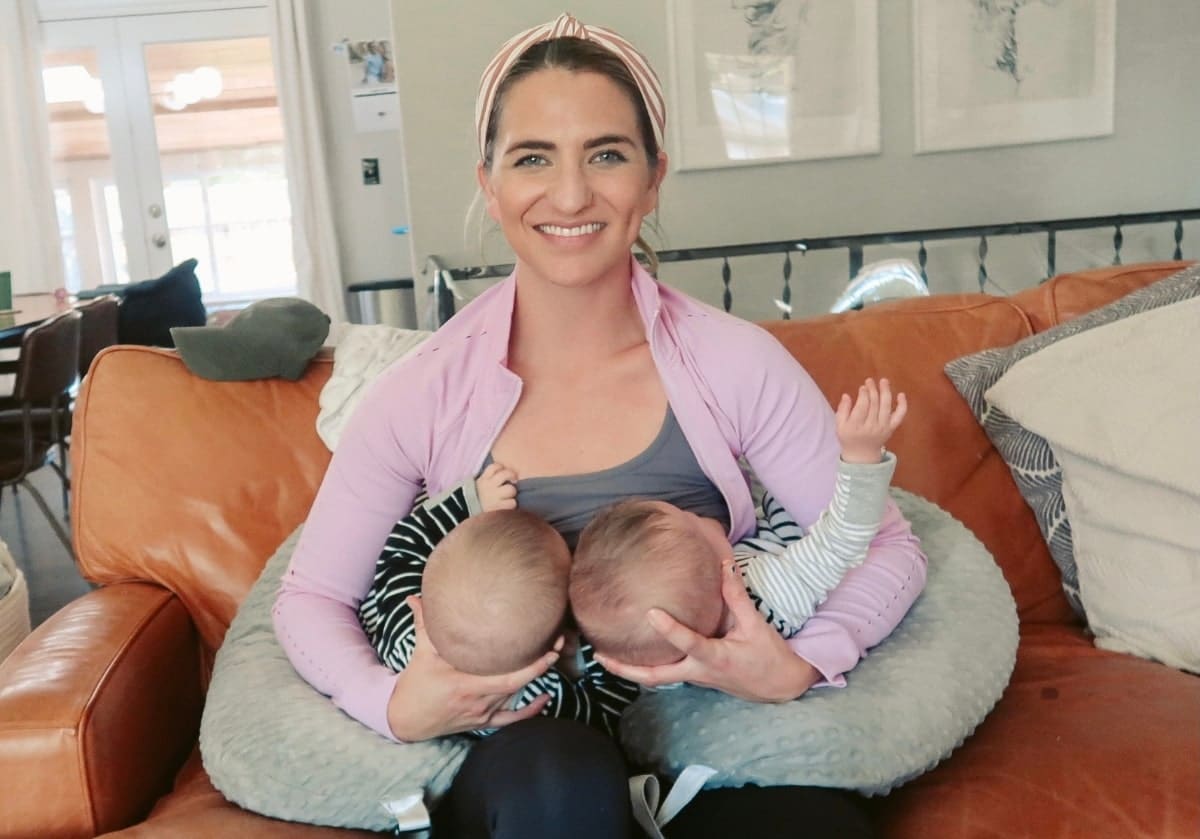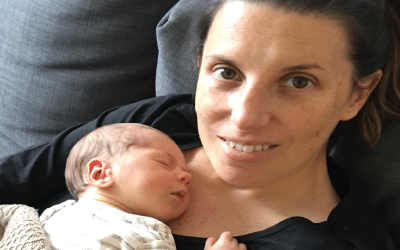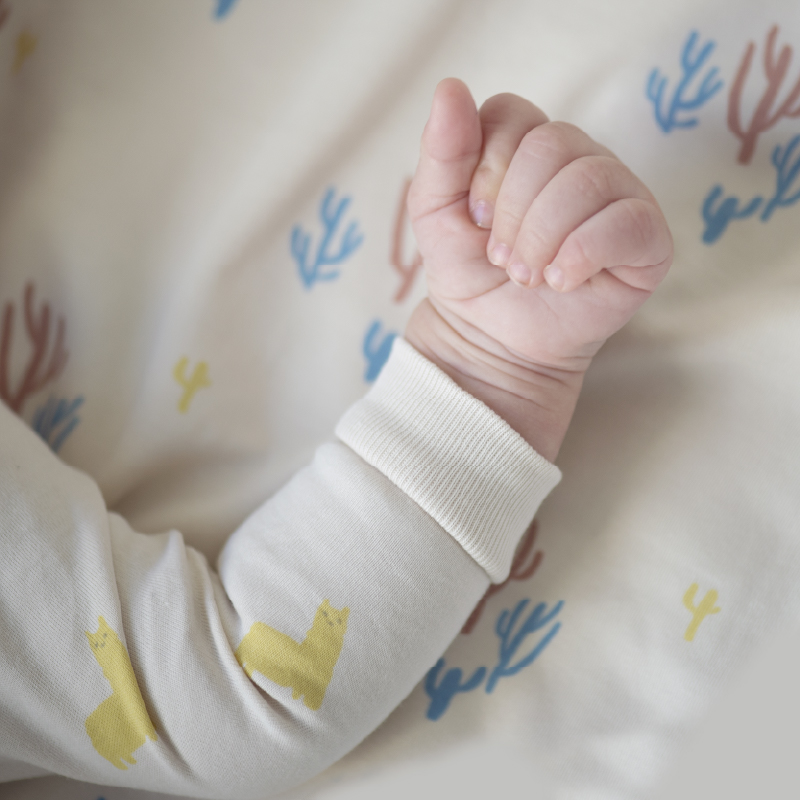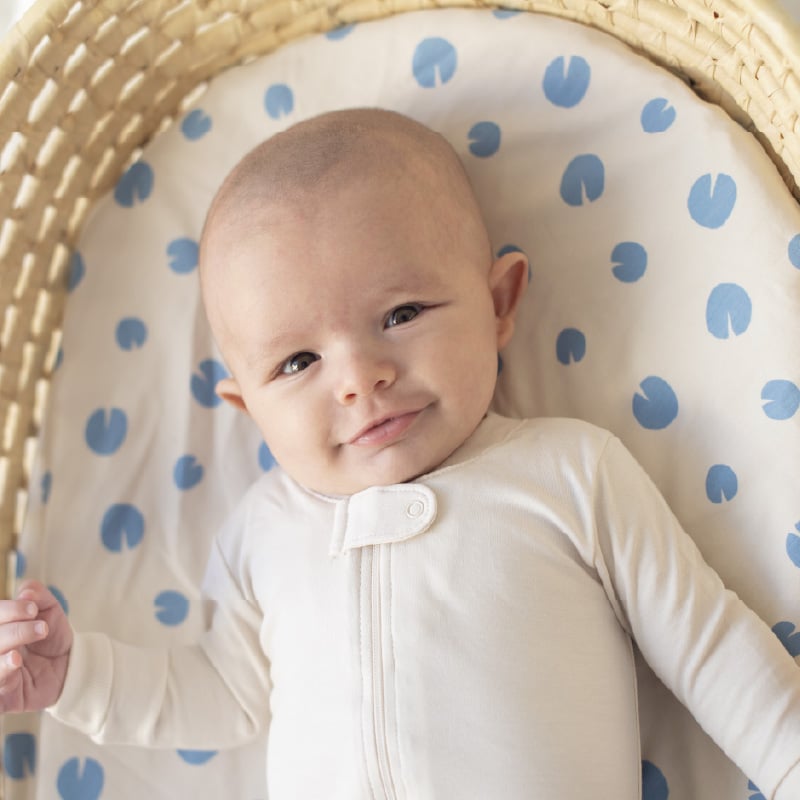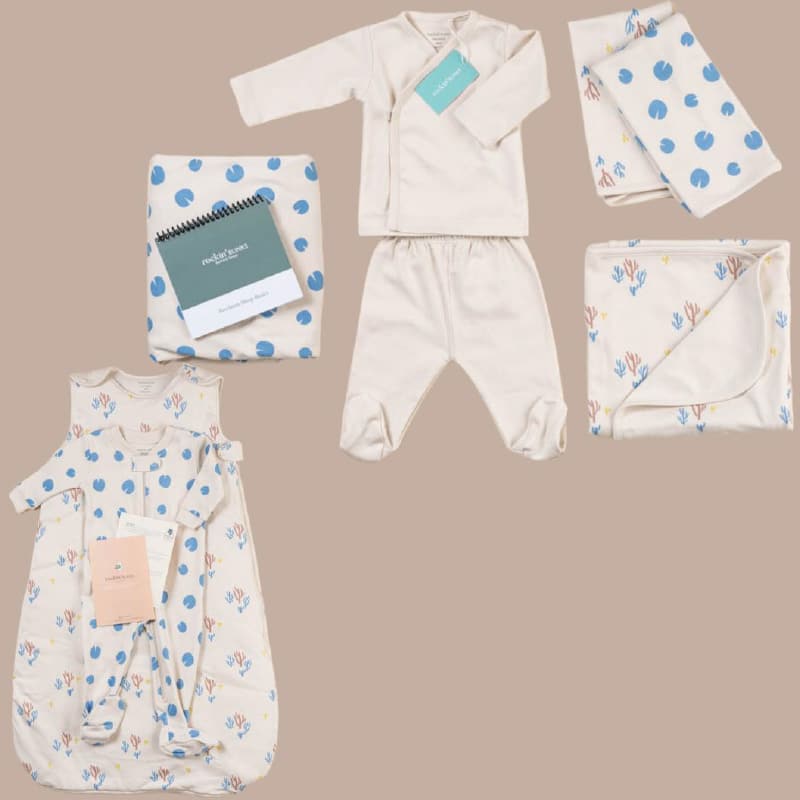Two different babies, two different sleeping patterns and one good night’s sleep. Find out below a case of 4-month-old twins who, with sleep training, were able to overcome their sleeping obstacles.
In our Sleep Diary series, we’ll explore individual families who struggled, experimented and eventually found the help they needed with their family’s sleep. We hope their stories will offer some helpful information for your own family’s sleep journey, and give you confidence that a good night’s sleep is attainable for everyone.
Sleep of 4 month old twins, is it difficult to achieve?
There are the early tiring newborn days that any new parent can understand, and there are the early tiring newborn days with twins. This is a whole different level of exhaustion that often only parents of multiples can get.
When it comes to sleep strategies for multiples, we always suggest starting by assessing three important elements that are uniform for all parents:
- Ffiguring out an age-appropriate schedule that respects the natural need for sleep;
- Ccreating a sleep-inducing environment
- Pand putting a sleep routine into place that promotes relaxation and allows your child to fall asleep and stay asleep.
But with multiples, there are also certain strategies to consider to make sure parents survive the exhaustion of fragmented sleep.
When twins Poet and Harlow were born, parents Ebie and Zac Hepworth needed to learn those strategies fast! They were eager to get their babies on regular sleep schedules as soon as possible. What they didn’t count on was that each baby had its own idea about sleep, and they weren’t necessarily compatible. Here’s how we helped her get the sleep she and her babies needed.
Ebie Says:
Why contact Rockin Blinks?
I knew I needed help with sleep training. I had purchased e-courses that were basic sleep training classes but after doing everything they said to do, it was not working. I needed something more custom and I needed help from someone who knew how to work with multiples.
Sleep training twins is one of the harder things I have ever had to do as a parent. Keeping both babies on the same schedule can be tricky. One baby will wake up and seem as though they are hungry, and if you feed one, you need to wake and feed the other. The biggest difference between sleep training one baby vs two babies is that it requires double the patience and double the effort.
I started sleep training with the help of Lola Sanchez Liste, the founder of Rockin’Blinks, at 6 months (5 months and 1 week adjusted age) because up until that point I was only getting 3-4 hours of sleep, and even those few hours were broken up between feedings and pumping sessions. I was on my last leg and needed to sleep desperately.
 Ebie feeding Harlow and Poet
Ebie feeding Harlow and Poet
What are Twin Challenges?:
My baby A is a pacifier-freak and would panic anytime it fell out in the night. He also wanted to be rocked to sleep every time he woke up. He is my high maintenance baby! My baby B is my easygoing baby; however, but even he wanted to be rocked to sleep and eat every time he woke up. One twin picked up on sleeping through the night and putting themselves to sleep much quicker than the other. But then the other twin’s crying would wake up my good sleeper!
My other challenge was getting my husband on board. It took my husband some convincing to agree to sleep training, because hearing your babies cry for hours will make anyone question if they are doing the right thing.
Twin Sleep Solutions:
The sleep plan Lola gave us was amazing. She allowed for specifics that were important to me. She also educated me on sleep safety that I had not been implementing.
Lola’s sleep plan also helped me to explain to my husband how teaching a baby to sleep at a young age can affect their sleep skills for the rest of their life. Once he was on board, he helped keep my heart in tact when I wanted to go in their room and console them. Having a partner that helps with the nighttime routine and is also supportive of the sleep training plan was a huge factor in helping our process be successful!
At first, I was nervous that the early bedtimes Lola recommended weren’t going to work, but sure enough, each naptime and bedtime she gave me worked. By the second week of sleep training, the babies were getting 12-13 hours of nighttime sleep.
Sleep Plan Roadblocks:
Unfortunately, early on during our sleep training, both babies got extremely ill and one baby needed to be hospitalized for 3 nights. I was very nervous it would affect sleep training. And while we did have some challenges when we got home and started getting back into our routine, it was so much better than before sleep training started.
It turned out that even one week of sleep training really helped lay down foundational skills and allowed for a smoother transition than I expected. By the end of Week 2, both babies were back to sleeping through the night. If I did not have Lola’s help during this process, I would have given up after the hospitalization.

Harlow and Poet in their cribs following safe sleep recommendation.
The Outcome:
Now that they are sleeping through the night, the twins are also so much happier during the day because they have adjusted to our new routine and are getting the sleep they need! Everybody is winning.
We still have a few minor challenges for Baby A falling asleep quickly on his own, but each night he always ends up figuring it out! Both boys have gone from feeding three to four times a night to feeding just one time. They are sleeping anywhere from 12-14 hours a night and wake up so happy!
We had a lot of challenges during the sleep training process, but each hurdle that came our way, Lola coached us through. I am finally getting more sleep each night which has increased my quality of life by leaps and bounds. When I have setbacks, I message Lola and she educates me on why she thinks that may be happening and what we can do to help overcome that challenge.
I would tell every parent that is preparing to sleep train their baby or babies that although sleep training is one of the hardest things you will do as a parent, your children will be more rested and joyful because of your hard work! The process of sleep training requires a lot of sacrifice on behalf of the family (hours of crying, staying at home to create a consistent routine, etc), but it is worth every minute of sacrifice. I am so thankful for Rockin’Blinks for helping our entire family get some much needed rest!

Ebie, with Asa, and twins Poet and Harlow
Lola Says:
Ebie and Zac’s babies were 5 months old when we started working together. This is an age when circadian rhythm starts getting more organized, so that makes it a great time to lay a healthy sleep foundation. Nighttime sleep is less fragmented and daytime sleep will start getting into rhythm. However parents still need to be flexible as babies still struggle to stay awake for more than two hours at a time.
I advised Ebie and Zac to pay attention to their babies’ sleep signs after around 2 hours of being awake. The goal was to offer 3 naps a day: around 8:30am, 12pm, then mid-afternoon, while still being flexible. As naps got longer and more consistent, we pushed the schedule to fall into place with the recommended times.
The Sleep Environment:
The babies were still sleeping in the parents room, which is best until at least 6 months to reduce the risk of SIDS, and helpful since many babies still feed during the night. During our initial conversation, I went through all the AAP safety recommendations to make sure the babies’ own room met safe sleep standards, and that helped Ebie and Zac feel comfortable moving them out of their bedroom. Each baby would get their own crib, which is critical with twins, and the room would be quiet, safe environment, and help everyone get better sleep.
The Sleep Routine:
Before starting sleep training, one baby was comfortable falling asleep in the crib, but the other one needed to be rocked and took longer to fall asleep. To help eliminate this lengthy process, we made sure to create the same sleep routine for both babies, which would also help the babies to change their sleep associations. We also focused on making things easy and simple to help parents, babies and older siblings enjoy the process.
- First, we reorganized the sleep routine. Feeding comes first! Parents would feed the baby outside of their room, and make it a family moment, with connection, lights on and interaction. Once the feeding was over, then the sleep ritual would start.
- The sleep ritual involved doing exactly the same steps every night: say good night, walk into the room, put down the shades, change diapers, put PJ’s on, then cuddles.
- The final step was to put the babies in the crib. Both Zac and Ebie were confident they wanted to stay with the babies while they fell asleep. From a nearby chair, they could talk to them, shush them, and pat them if necessary. After a few nights, the chair would move further and further from the crib.
Night feedings:
Because of the babies’ age and need to gain weight, the sleep plan included two feedings during the night. (Check out this article for more insight about night feedings by age!) Rather than let the babies dictate feeding times (often separtely), our plan would be to feed them at the same time. Once one baby would wake up and be fed, parents would wake the other baby up and feed him simultaneously. This is a key strategy for parents of multiples. It’s necessary to keep both babies on the same schedule to survive.
The first feeding would be after midnight (to allow the babies to consolidate the first part of the night and get restorative sleep), the second feeding was going to be 3 to 4 hours after the first one.
After a few nights repeating this process, the babies were only eating once a night. And when parents and pediatrician gave green light, all night feedings were dropped.
Siblings on board:
Ebie and Zac enlisted the twins’ older siblings to make sure they were supportive and invited them to participate in the daily sleep routine, helping parents with diaper changes, storytelling or just being patient while the parents put the babies to sleep. This was also a good opportunity to discuss the importance of sleep for a healthy life at every age.
Benefits of Better Sleep:
Even when the first few nights of adjustment were difficult, the parents quickly identified the benefits of better sleep. The babies were happier and more relaxed during the day, more focused during feedings and the routine became less challenging.
Twin Tips for create sleep routine:
- Always feed both babies at the same time (if only one wakes up to eat, wake up the other one to feed him at the same time.
- Don’t let one baby sleep for more than 15-20 minutes than the other. This will help you keep both on the same schedule for nighttime sleep and naps.
- Follow the most sensitive sleeper. If one baby seems to be more sensitive when getting overtired, it’s better to follow the lead of that baby. The other baby will find it easier to adjust to the sibling schedule.
- Stay consistent!
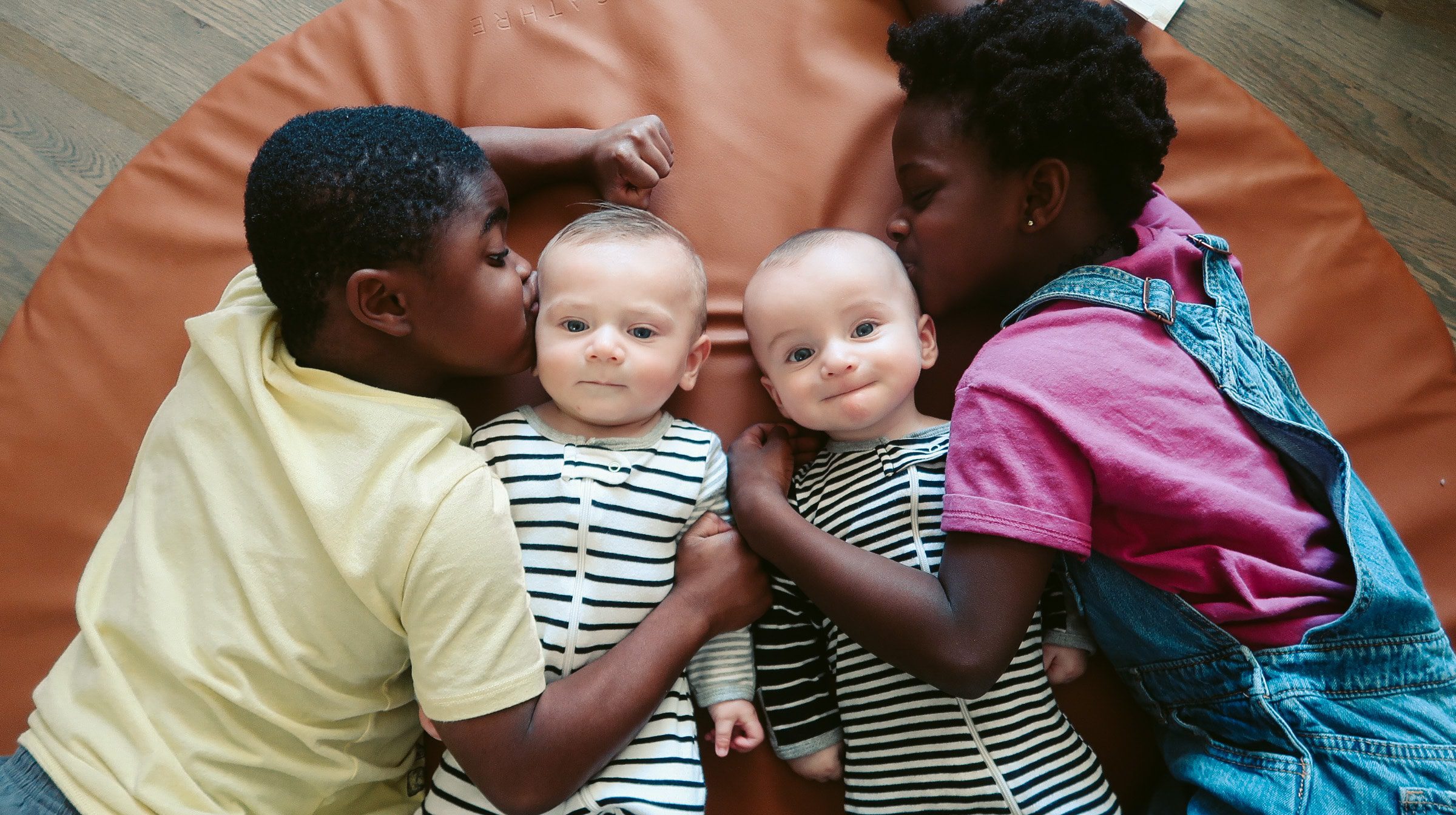
Asa, Poet, Harlow and Birdie
- Ebie Hepworth is a mom of four children: Poet, Harlow, Asa, and Birdie. Go follow her on instagram were she shares her adventures as a mom of adopted children and one set of twins @ebiehepworth.
Good sleep is essential for a happy healthy childhood and life. Book a consultation with us now!
Subscribe to our Newsletter and get the latest in sales, sleep information and more

